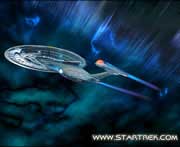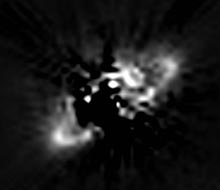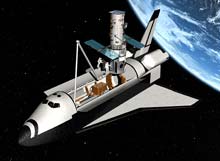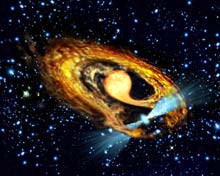Physics and Astronomy
This area deals with the fundamental laws and building blocks of nature and how they interact, the properties and the behavior of matter, and research into space and time and their structures.
innovations-report provides in-depth reports and articles on subjects such as astrophysics, laser technologies, nuclear, quantum, particle and solid-state physics, nanotechnologies, planetary research and findings (Mars, Venus) and developments related to the Hubble Telescope.

New superconducting transformer is light and compact
Researchers from the Technology Foundation STW and the University of Twente, in cooperation with Smit Transformatoren and Smit Draad, have developed a prototype coil for a superconducting transformer which is not only light and compact but also energy-efficient. A keen interest has already been expressed by several companies.
The coil is made from superconducting wires, insulated using a newly patented method. Furthermore, together with Smit Transformatoren the researchers have developed a m

Scientists detect first afterglow of short gamma-ray bursts
In the powerful, fast-fading realm of gamma-ray bursts, scientists say they have detected for the first time a lingering afterglow of the shortest types of bursts, which themselves disappear within a second.
This afterglow, radiating in X rays, may provide crucial insight into what triggers the mysterious bursts, the most energetic explosions in the Universe, second only to the big bang in total power. Previously, scientists had only detected the afterglow of longer bursts, which can last fr

Star trek criteria
Interstellar travellers should be “motivated, tolerant and nice”.
One hundred and sixty fertile, motivated, English speakers could make it to distant stars, researchers have worked out. But generations down the line, returning voyagers may speak an alien tongue.
Travel to planets orbiting other stars will soon be technically possible, the meeting of the American Association for the Advancement of Sciences in Boston heard last week. But the 200-year odyssey will require a cer

ESA scientist discovers a way to shortlist stars that might have planets
Markus Landgraf of the European Space Agency and colleagues (*) have found the first direct evidence that a bright disc of dust surrounds our Solar System, starting beyond the orbit of Saturn.
Remarkably, their discovery gives astronomers a way to determine which other stars in the Galaxy are most likely to harbour planets and allows mission planners to draw up a ’short-list’ of stars to be observed by ESA’s future planet-search missions, Eddington and Darwin.
The discovery of th

Hubble gets revitalised in new Servicing Mission for more and better science!
After nearly 12 years of incredible scientific discoveries, the ESA/NASA Hubble Space Telescope orbiting Earth is about to have another service visit. The purpose is to upgrade Hubble system and to install newer and more powerful instruments that will astoundingly increase Hubble’s discovery capabilities and extend the longevity of the observatory.
As a unique collaboration between the European Space Agency (ESA), and NASA, Hubble has had a phenomenal scientific impact. The unsurpassed sha

First view of a newborn millisecond pulsar?
Combining Hubble Space Telescope images with radio observations has revealed a highly unusual system consisting of a fast spinning pulsar and a bloated red companion star. The existence of the system is something of a mystery – the best explanation so far is that we have our first view of a millisecond pulsar just after it has been `spun up` by its red companion star.
Although more than 90 specimens of the exotic species of fast-spinning `millisecond pulsars` are known today, no observation